by Sarah Segall | Apr 30, 2016 | In The Loop
Language Arts
This week we began our new unit on Telling Stories. Our first story was an African folktale. The Sky Gods owns all the stories that can ever be told. Ananse, the Spider Man, wants to buy them and bring the stories to Earth. But the Sky God has demanded a high price. This story was tricky for everyone as it included many African words and older vocabulary. The students did a great job and showed off their reading comprehension skills by using context clues and prior knowledge to help them.
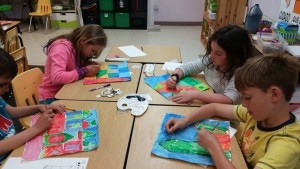 Math
Math
Our geometry objectives this week were to:
- identify open and closed figures.
- identify special polygons and quadrilaterals.
- classify polygons by the number of sides, vertices, and angles.
- classify quadrilaterals by parallel sides, length of sides, and angles.
- combine and separate polygons to make other polygons.
All these skills were practiced throughout the week and were especially fun during our Math/Art Cityscape.
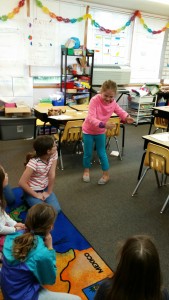 History & Geography
History & Geography
This week we learned about John Cabot and his expeditions as well as the sad story of Henry Hudson. The class worked on their expedition logs, did some readings on the explorers and wrote out answers to questions from the readings. We also read a trade book about the early explorers and watched a short documentary on John Cabot and Henry Hudson. On Friday we made our own idiom book for all of the phrases that we’ve learned so far this year. The students wrote the idiom down, drew a picture for it, and explained what it meant in their own words. Afterwards we had a blast playing charades and guessing which idiom was being acted out.
Science
Our Focus this week was learning about food chains, food webs, and energy pyramids. We’ve looked at different ecosystems and identified consumers, producers, decomposers, and scavengers for each. On Thursday and Friday the class worked on doing some research for making their own food web for a chosen ecosystem. They had fun finding information on and pictures of different animals that fit into their food web.
English Spelling
We had our regular week in spelling with new sorts, activities, and grammar review. The class looked at past participles and words that end with ” ing”. In our journals, we did a persuasive entry on why we should be given, or continue to be given, an allowance. Once this was done, the class had free choice journal writing for the rest of the week.
Art
All the students continued working on their Mother’s Day pictures and cards. I know you’ll enjoy their colorful, beautiful artwork! Next week we’ll resume their collage portraits.
4/5
by Sarah Segall | Apr 23, 2016 | In The Loop
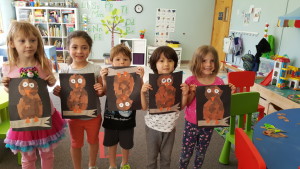 Animales
Animales
This week we continued working with animals and their habitats. We learned about the animals that live in the jungle. There are millions of animals living in the world’s jungles, also known as tropical rain forests. The kiddos learned that many animal species live in the jungle (mammals, birds, insects, amphibians and reptiles). In addition, they learned that the world contains many different jungles or rain forests, and the list of jungle animals would be different for each jungle. However, the kiddos learned the most common animals such as, elephant, tiger, lion, rhinoceros, monkey, kangaroo, giraffe, snake, crocodile, bear, owl, hippopotamus. We did beautiful animal projects on lions, owls, bears, and elephants.
Letter
We incorporated our touch investigation with the letter/letra Ww. The kids practice handwriting in paper and we used corn flour using our finger and to draw it. We sang songs, read a book of the letter Ww, and recognized the letter in our daily reading. The English letter Ww can be pronounced (debel-iu). While the Spanish pronunciation is (doble u). Example, Washington/Washington, waffle/waffle, waterpolo/water polo.
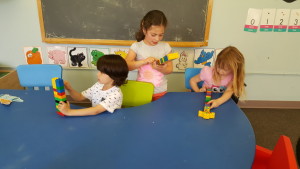 Numbers
NumbersThis week we worked with number 17. We had a fun time playing and using some items to sort and count. Sorting helps children see differences and similarities. We used colors goldfish and Duplo Blocks for these activities.
by Sarah Segall | Apr 23, 2016 | In The Loop
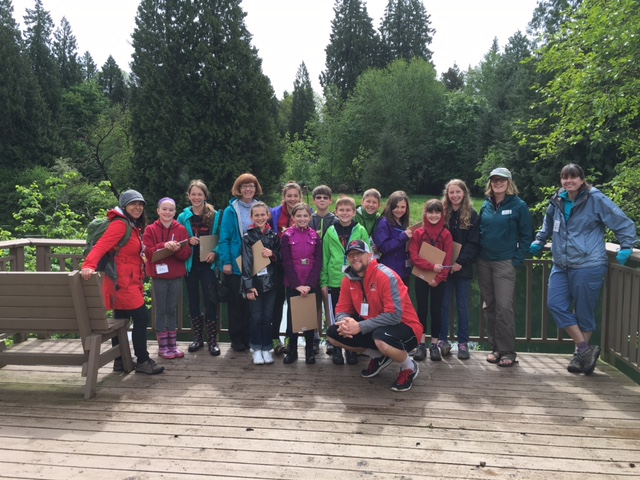
Language Arts / artes del lenguaje
This a list of the concepts seen during Literacy this week. Remember that all of these concepts are studied, embedded in a rich and meaningful context. We discussed the difference between learning and acquiring a language and its rules (Spanish), and how crucial it is for students to be able to transfer words to other scenarios in order to internalize their meaning.
- New spelling list
- Word Work: Diphthongs and Hiatus
- Word Work: Suffixes (-ente)
- Irregular verbs (present tense)
- Oral Language: Describing Objects
- New reading packet Historias del abuelo
- Spelling sentences
- Manifest Destiny: Drawing Inferences
- Book Club: Karate Kid (Camdyn and Grace)
This week we started our new book club, Beisbol en abril. Our first group integrated by Camdyn and Grace did an excellent job facilitating our literature circle. Next week we have two groups responsible for this important job. All of our students have a partner and have selected a story from the book. They will be reading these stories aloud in class. We are very excited to read and listen to these short stories. Please make sure that your child comes prepared when it is their turn to facilitate.
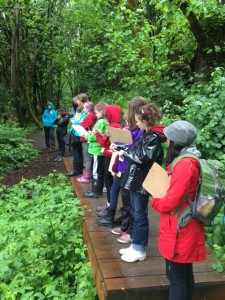 Science / ciencia
Science / ciencia
This week we had our much anticipated field trip to Columbia Springs. Everything went so perfectly well, from the great weather (no rain!) to the great hands-on learning experiences. We also had fabulous instructors, Miss Jenna and Miss Ellen, who guided us through three different stations. We had a chance to use all our senses to connect to nature. What a great way to kick off our spring science studies and, of course, we couldn’t have asked for a better way to celebrate our beloved mother Earth, on her special day!
In class, we discussed the big ideas of our spring science studies, The Living Systems Module. It has four investigations that will focus on systems as the unit of study. The idea of a system is one of the grand integrating (cross-cutting) concepts that pervades all of science. Students will start by looking at Earth as the interaction of four Earth systems or subsystems – the geosphere, the atmosphere, the hydrosphere, and the biosphere. The focus of the module then turns to the biosphere as students explore ecosystems and organisms in terms of their interacting parts. In this module students will:
- Analyze everyday systems and subsystems.
- Analyze food chains and food webs as a way to study the biosphere.
- Make and analyze a worm habitat as a decomposition system.
- Investigate nutrient-getting systems of yeast, plants, and animals, including humans.
- Investigate and model transport systems in plants and animals.
- Investigate sensory systems in animals
History & Geography

We completed our Lewis and Clark journals this week, if you have not yet stopped by our bulletin board go and check them out. The students worked very hard and did a fantastic job of describing various plants, animals, and landmarks. As wells as, wonderful “a day in the life of Lewis and Clark” journal entries. The students read-aloud their journal entries focusing on using their voices to build the setting and tone of their stories. To finish off our Lewis and Clark chapter we watched a short video by TEDed that debunked common myths about Sacagawea. The students were very surprised by many things that Sacagawea accomplished. A few stand outs were the fact that she dived into a river to retrieve Lewis and Clark’s journals and supplies that had fallen in, and that she was kidnapped at the age of 12. We also began our Chapter on Mountain Men and Trappers. We discussed Zebulon Pike and Pike’s peak and why Pike’s peak was named after him. We also saw various examples of other Mountain Men like Kit Carson and Jim Bridges. We will continue Mountain Men and Trappers next week including a read-aloud and a fun activity!
Math
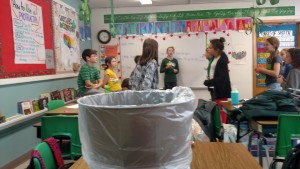 We had our Chapter 12 test this Monday. Although, it was a tough test I am so proud of how far everyone has come and all the skills they’ve mastered. We began chapter 13 this week we are going back to working with our old friend the triangle! We did a quick review of Chapter 6 and other concepts we learned before. We are using a lot of prior knowledge this chapter to expand our knowledge of polygons. We learned a very catchy polygon song this week, I’m sure m
We had our Chapter 12 test this Monday. Although, it was a tough test I am so proud of how far everyone has come and all the skills they’ve mastered. We began chapter 13 this week we are going back to working with our old friend the triangle! We did a quick review of Chapter 6 and other concepts we learned before. We are using a lot of prior knowledge this chapter to expand our knowledge of polygons. We learned a very catchy polygon song this week, I’m sure m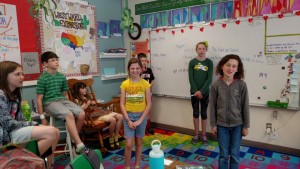 ost of you have already heard it! We just started classifying triangles by angles and by sides. When classifying triangles by angles they can either be right, obtuse, or acute. When classifying triangles by sides they can be isosceles, scalene, or equilateral. They have 2 pages of homework this weekend that is due Monday. Remember I am available through email all weekend if there are any questions. To finish on a fun note we played trashketball with our classifying triangles definitions.
ost of you have already heard it! We just started classifying triangles by angles and by sides. When classifying triangles by angles they can either be right, obtuse, or acute. When classifying triangles by sides they can be isosceles, scalene, or equilateral. They have 2 pages of homework this weekend that is due Monday. Remember I am available through email all weekend if there are any questions. To finish on a fun note we played trashketball with our classifying triangles definitions.
English Spelling/ Vocabulary
We received new word lists this week and kicked off our week by writing silly stories using at least 10 words from our spelling list. The words had to be used correctly and in a way that proved you know the meaning of the word. We were then able to share these silly stories with each other and edit. We focused on looking for COPS in each other’s stories. COPS: Capitalization, Order/Organization, Punctuation, Spelling. We then looked up the definitions for the other 10 words from our spelling list and put it into our own words or used it in a sentence. We made sure to also look at what part of speech each word is and how to find the part of speech of each word in the dictionary. We also learned how to play WRITE! this week have your student explain the game to you! Its simple enough to play at home with 2 people! Because of the field trip this Friday our spelling test was moved to Monday so be prepared!
Art
This week all of the students are taking a break from their regular art projects to make some Mothers Day paintings. You will get to see their beautiful artwork in a couple weeks!
Music
We spent the first half of the class working on the Spanish and English versions of “Life is a Dance” by Karl Anthony. The rest of the time was devoted to a review of some of our favorite songs from our years together.
by Sarah Segall | Apr 23, 2016 | In The Loop
Language Arts
This week, to conclude our Teamwork theme, we read La gallinita roja/ The Little Red Hen. The kiddos did a great job joining in for the repetitive parts of the story. They sequenced and wrote about what happened in the different parts of the story.
We have been working more on editing sentences. We do this as a whole group and then the students are asked to edit their own writing. We wrote about our household chores in our journals this week. Most students wrote three sentences and did a great job!
Math
We continued our geometry unit by learning all about triangles, ovals and the rhombus. We had great conversations about these shapes and identified the sides and angles.
We also worked on subtraction using the number line. Counting backwards from a given number can sometimes be tricky but these kiddos are doing a great job!
Science
This week we worked in our garden planting Teepee posts that bean plants will grow up and create a fun outdoor place space.
We are continuing to learn ways that we can take care of the earth. We learned about the 3Rs. Reduce, reuse, and recycle. See if your kiddo can explain the 3Rs to you. Also see if you can identify ways around your house that you may be using the 3Rs. We learned to identify common recyclable materials including glass, Plastic, aluminum, cardboard, and paper. We also learned about the process of recycling materials from home to the recycling factory.
Lastly, we learned about composting and that it is a type of recycling in which discarded food scraps are put in an outdoor pile or bin and eventually become garden soil. We will soon be working on getting our very own compost been up and started here at Spanish with Sarah. We learned the sequence of what happens to a piece of discarded food from the table to the compost pile to the garden. We also identified foods that can be composted.
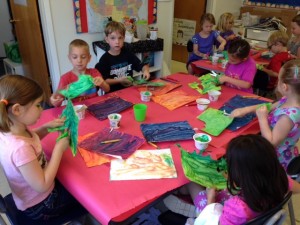 Art
Art
This week in art we worked on some watercolor paintings for Mothers Day. The students learned about warm and cool colors, and how to let the watercolor paint blend together. We also had time to work on the Eric Carle caterpillar pictures. The students are doing a great job cutting out shapes from their painted paper. We’ll hopefully finish these next week!
Music
The class started learning “El pequeño panda de Chapultepec,” a song from Mexico City about the first panda ever born outside China. Sr. Kit learned this from his daughters when the younger one was in a kindergarten immersion school in San Diego.
by Sarah Segall | Apr 23, 2016 | In The Loop
Language Arts
In language arts this week we learned about paragraph structure. We discussed how a paragraph has a beginning sentence that introduces the topic and then at least three sentences to support that topic. We also talked about how a paragraph has a sentence that closes the paragraph. The students practiced indenting the first sentence of a new paragraph. In Spanish it’s called sangrado. We reviewed the words that show order like first/primero or next/entonces. All these things are in preparation for our next writing assignment which will be a book report about the story we read in class called Amelia Bedelia.
Hopefully you had a chance to check out our self portraits and summaries on the bulletin board outside of our classroom. They did a wonderful job!
We also read the story called cuando se acerca una tormenta/When a storm arrives. Some vocabulary words that we discussed were: inundación/flood, embudo/funnel, tornado/tornado, torbellino,/whirlwind, ventisca/blizzard. The kiddos did a great job coming up with sentences using these words.
Phonics:
We discussed words with consonant blends like -cr as in escritura -tr, as in tren and -gr as in grande. Of course, the kiddos enjoyed drinking their consonant blend smoothies, after getting into groups and forming giant blenders. They had a blast!
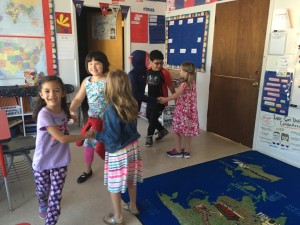
Math
In math this week we started our chapter in Mental Math. We reviewed some math strategies like forming “10” when adding, adding doubles and adding doubles plus “1”. This unit is an important part of the Math in Focus curriculum and will help them to grasp the upcoming, more difficult concepts. In order for the students to get the most out of this and future lessons they would greatly benefit from practicing their basic addition and subtraction math facts at home.
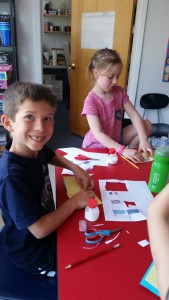 History & Geography
History & Geography
We started off the week by taking a look at the life of Benjamin Franklin. We read about his various jobs, inventions, travels, and his work as a Founding Father. On Tuesday we watched a short Disney film about his life right before the Revolutionary War to the signing of the Declaration of Independence. Afterwards we made our own Benjamin Franklin Passports. The class had a great time discussing his life and doing work that honored him. We finished off the week with a read aloud on Thomas Jefferson. The class discussed the important things he did for this country including writing the Declaration of Independence, helping to design important architecture in Washington DC, and his involvement in establishing public education. We compared and contrasted his life to those of Benjamin Franklin and George Washington. We also discussed idioms that apply to this era and added to our time line.
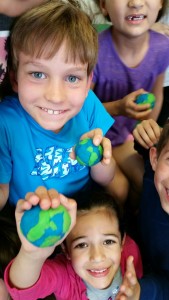 Science
Science
On Monday we wrote about the Earth’s crust and filled out a chart on what lives above, on top of, and inside the crust. On Thursday our read-aloud talked about natural disasters such as volcanoes and went more in-depth into what makes up the different layers of the Earth. We focused on solid and liquid aspects of these layers. On Friday we celebrated Earth Day by making a layered Earth ball out of play dough that has the crust, mantel, outer core, and inner core represented in it. For Earth Day, we also wrote a letter to our parents talking about why it is important to take care of our planet and ways that we can do this. The class reviewed what they have been learning about paragraphs in their Spanish Language Arts period of the day and applied this to what they were writing. We focused on sequencing transition words in our letters.
English Spelling
This week we practiced sorting our words once and then wrote them in simple sentences. Everyone did a great job on their spelling test Friday. I will be sending new sorts home on Monday. This week in our journals we wrote about what we have learned about the Earth as one entry and we also wrote a rough draft of our letter to our parents about ideas of how we could save the Earth. The students had wonderful and very enthusiastic ideas of what they could do to help our planet.
Art
This week all of the students are taking a break from their regular art projects to make some Mothers Day paintings. You will get to see their beautiful artwork in a couple weeks!
Music
The class listened to several harp pieces Sr Kit introduced last week, seeing who could recall what the various melodies represented: a bell-like bird song, dolphins swimming, a waterfall, galloping horses and the harvesting of corn. We also reviewed several pieces from past lessons that stand out in the class’ minds.
by Sarah Segall | Apr 23, 2016 | In The Loop
Language Arts
We were very busy in our Language Arts (as always). We read a great historical fiction piece, La peluqueria del tio Jed. This is the story of a determined man who was also a loving uncle. Uncle Jed had a dream that was challenged by a family crisis and the Great Depression. This is his story, told from the viewpoint of his loving niece.
We worked on writing persuasive paragraphs. One topic for our daily journal writing was “It’s better to be happy than rich.” We also identified and wrote good beginnings and good endings. Combining sentences with y, o, pero/ and, or, but was also a lesson on making sentences more interesting.
Students received a new reader. They should be reading aloud to practice their fluency.
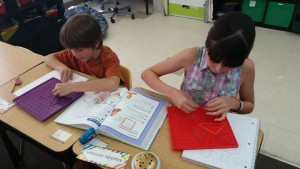
Geoboard fun!
Math
This week we began our unit on Angles and Lines. Our learning objectives this week were:
- find angles in plane shapes and real-world objects.
- compare the number of sides and angles on plane shapes.
- make a right angles.
- compare angles to a right angle.
- identify right angles in plane shapes.
- define and identify perpendicular lines.
- define and identify parallel lines.
Spelling (Test on Tuesday)
estuvo
carnívoro
obvio
brevedad
vez
versiones
vive
centavos
lucrativo
educativos
detective
nuevos
convirtió
dispositivo
inventó
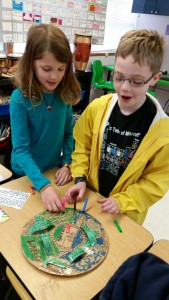 History & Geography
History & Geography
This week we started off by finishing our Voyage Proposals. I hope all of you have had a chance to look at them on the bulletin board. The class had so much fun working on these! On Tuesday we read about Spanish settlements and missions. We discussed the role of the missions: converting the Native Americans to Christianity, teaching them European culture and farming techniques, and removing their own culture. We wrote about what we learned and added this information to our Expedition logs. On Thursday and Friday we read about John Cabot and found his route on the map. The class then read a brief biography on John Cabot and answered some written questions about the reading.
Science
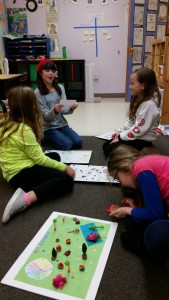 This week we start off by talking about food chains and food webs. The class learned about how important each trophic level is to a food chain and what happens when the balance is thrown off. On Thursday in honor of Earth Day the class designed their own board game to save the Earth. They had a great time designing games and using recycled material to create it. On Friday the class had game time for one period; everyone found some to share their games with. They had a blast! Afterwards each person wrote a review of the games she/he played and gave these to the designer of the game. For Earth Day, we also brainstorm ideas that we could do at home to help the planet. The students then wrote a persuasive letter encouraging you, their families, to make the change at home. Not only was this a way for the class to review their persuasive writing skills but it also was an opportunity for them to learn their addresses, if they haven’t done so yet.
This week we start off by talking about food chains and food webs. The class learned about how important each trophic level is to a food chain and what happens when the balance is thrown off. On Thursday in honor of Earth Day the class designed their own board game to save the Earth. They had a great time designing games and using recycled material to create it. On Friday the class had game time for one period; everyone found some to share their games with. They had a blast! Afterwards each person wrote a review of the games she/he played and gave these to the designer of the game. For Earth Day, we also brainstorm ideas that we could do at home to help the planet. The students then wrote a persuasive letter encouraging you, their families, to make the change at home. Not only was this a way for the class to review their persuasive writing skills but it also was an opportunity for them to learn their addresses, if they haven’t done so yet.
English Spelling
For grammar this week we worked on reviewing past tenses and plurals. In our journals he wrote about how doing a project for the Children’s Center last week made us feel, and what we liked about it. We worked on our spelling activities and did our sorts this week. Over all the class did an amazing job on their spelling scores this week!
Art
This week all of the students are taking a break from their regular art projects to make some Mother’s Day paintings. You will get to see their beautiful artwork in a couple weeks!
Music
This week the class worked on reinforcing the lyrics of one our longer songs, “El pequeño panda de Chapultepec, which celebrated the birth at Mexico City’s Chapultepec zoo of the first-ever panda cub born outside China. We also continued work on “Life is a Dance.”
by Sarah Segall | Apr 16, 2016 | In The Loop
Language Arts / artes del lenguaje
What a busy week! As we welcomed everyone back after their busy Spring break, we got to write, share and hear memorable Spring break stories. I am so happy that everybody had a wonderful time, either travelling far or staying locally enjoying the great weather. I was also very pleased to hear everybody get back to using their Spanish since day one.
Oral language development was a focus during the Spanish portion of the day this week. One of literacy activities was to use descriptive language in context. Students were assigned to think of one or two objects that represented their Spring brake. They were asked to use sensory rich language to describe these objects. We had a great time figuring out clues in order to identify the objects. We will continue with this game next week.
During our word work, we continued to review verbs (present tense), particularly the verbs we will be seeing during science this term. We discovered that most of these verbs are cognates. We also worked on strategies to identify words by looking at their roots. Some examples are: analizar, aplicar, clarificar, comparar, concluir, criticar, describir, distinguir, enumerar, formular, generalizar, inferir, organizar, transferir, predecir, secuenciar, etc. We concluded our language structure studies by reviewing different the types of sentences. Ask your child to explain and give you examples of: oraciones declarativas, interrogativas, exclamativas, imperativas, with appropriate punctuation.
For our literary studies, we continued to read the text La caza del bufalo, from our unit West Expansion. This week, our class broke up into two groups and were assigned to do a collative project. Each group was given an excerpt of this story. Their assignment was to get together as a group, read the excerpt, clarify for understanding, summarize the text by identifying main ideas and supporting details. Lastly, they were asked to communicate the message of their piece to the other group through a visual aide and an oral presentation.
Finally, students were presented with their new book club project, “Beisbol en abril”. During the duration of this literature circle, we will be exploring the characteristics and elements of short stories. Students will also be working on reading with fluency and expression, as well as intonation and enunciation. As homework, students were asked to sit down with a parent this weekend and explain the expectations of this project (rubric given on Friday). Please let me know if you have any questions.
Science / ciencia
We had the pleasure to see more science presentations. Once again, we are very impressed by the high level of the presentations and the professionalism shown by our students. We are hoping to be completely finished next Monday.
This week we had the privilege of having a guest speaker deliver a superb science presentation. I had a special connection to the speaker. I felt very proud to see Valentina, my daughter, interact so beautifully (in Spanish) with my students, when telling the stories of her study-abroad experience in Ecuador. Valentina spent three months conducting research in one of the most bio diverse places on earth. She had a chance to visit the cloud forests, the equatorian Amazon, the Galapagos Island, amongst many other incredible places. If you and your child would like to know more details about her amazing experience, visit her blog https://thejourneytosciencejournalism.wordpress.com
Families!!! We are very excited about our field trip next Friday, April 22nd form 9:30 to 1:30. Please be sure to be on site 10 minutes before the scheduled start time.
Columbia Springs is a non-profit 100 acre urban natural area and historic fish hatchery. The site has been preserved for wildlife and community environmental education.
Art
The 2nd and 3rd grade class, and the 4th and 5th grade class are working on a portrait project in art. We looked at a variety of famous portraits such as Leonardo’s Mona Lisa, Van Gogh’s self portrait, some Picasso portraits, and Matisse portraits, etc. The 2nd/3rd graders are using a collage technique to create a face, and the 4th/5th graders are using pipe cleaners to create a face. These are fun ways to get the students to think about facial features, proportions, and expression!
Music
We learned a South African song, Siyahamba (We are marching) in Zulu, English and Spanish. Sr. Kit also taught the class his Spanish translation of “Life is a Dance,” by Karl Anthony.
by Sarah Segall | Apr 16, 2016 | In The Loop
Language Arts
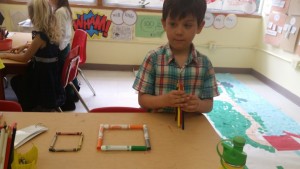
squares
Wow! What a busy week. We continued our Teamwork theme with a great story: Swimmy by Leo Lionni. In this fable Swimmy was left all alone when the rest of the fish in his school were eaten by a large tuna. Swimmy then set out to find another school of fish, and he did. However, when his new group of friends are afraid to venture out into the ocean, Swimmy invents a plan to protect them. Swimmy showed them that teamwork could save them. The kiddos enjoyed illustrating this story with a special paint project.
This week we worked with the pronouns: él – he and ella – she. They had no problem with the concept of pronouns replacing proper nouns.
We worked with riddle poetry this week. The students were great at figuring out what the ¿Qué soy? riddles were. Next week the students will work to write their own personal riddles.
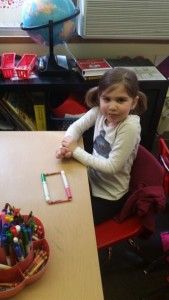
rectangle
Math
We have officially began our geometry unit. The students are already very familiar with two dimensional shapes. This week we talked about circles / circulos, squares / cuadrados, and rectangles / rectángulos. We talked about what makes a square, what makes a rectangle, and how they are different. The students all did a great job telling how a square has 4 equal sides and a rectangle has four sides with two sides shorter than the other two sides. We have almost completed our two dimensional shapes on our class Teamwork mural. We plan to add three-dimensional farm animals when we get to that part of our math lessons.
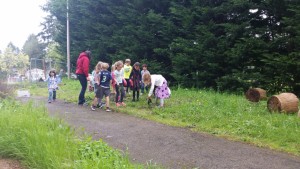 Science
Science
This week we started our unit on Taking Care of the Earth. This week we learned that Earth is composed of land, water and air. We identified examples of these in our own environments. We learned about how humans, plants, and animals depend on Earth’s land, water and air to live. We also discussed how people have a special responsibility to take care of the earth. See if your kindergartner can tell you some of the ways we can care for our earth.
We also learned about garbage. We were amazed at how much garbage humans generate! We learned the process that garbage goes through from its creation to being dumped in the land fill. We learned what a landfill is and why it is a dangerous place. We discussed alternatives to landfills.
Every April, we challenge families to send in trash-free lunches. We are doing our part in reducing the amount of trash we as a school are sending to landfills. This means sending lunch items in reusable containers and minimizing the pre-packaged foods with wrappers. It’s fun for the kids to compare the difference in the amount of trash we generate. We will begin on Monday, as we paid close attention this week to how much garbage we produced.
Save the date!! We have our last field trip on Friday, April 29th. We will meet at the Vancouver Water Resources Education Center at 9:30 in the morning. We will have lunch after the presentation, play at the park, and then return back to school for a regular afternoon with the usual dismissal time. Like most Spanish With Sarah field trips, students will be transported by their parents or a driver arranged by their parents. Stay tuned for more information!
*****Save the date!! All moms are invited to a special Mother’s Day Tea on Tuesday, May 3rd at 2pm.
Art
The kindergarteners learned about Eric Carle’s artwork this week. We talked about how he makes a variety of painted papers in different colors and textures, and then uses these papers to cut out shapes to create his animals. The students had fun making their own painted papers by mixing primary colors. Next week the students will use their painted papers to create a “Very Hungry Caterpillar”
Music
Today we explored music from the South American harp traditions, inspired by sounds and sights in nature. These included “Cascadas” (“Waterfalls,”); “El pájaro campana,” (“The Bell Bird,”); “Galopando,” (“Galloping,”); Melissa Morgan’s “Waltz of the Dolphins;” and Ecuadorean indigenous harper Taita Emilio Guandinango’s composition, “De la cosecha de maíz,” (“Of the Harvest of Corn.”)
by Sarah Segall | Apr 16, 2016 | In The Loop
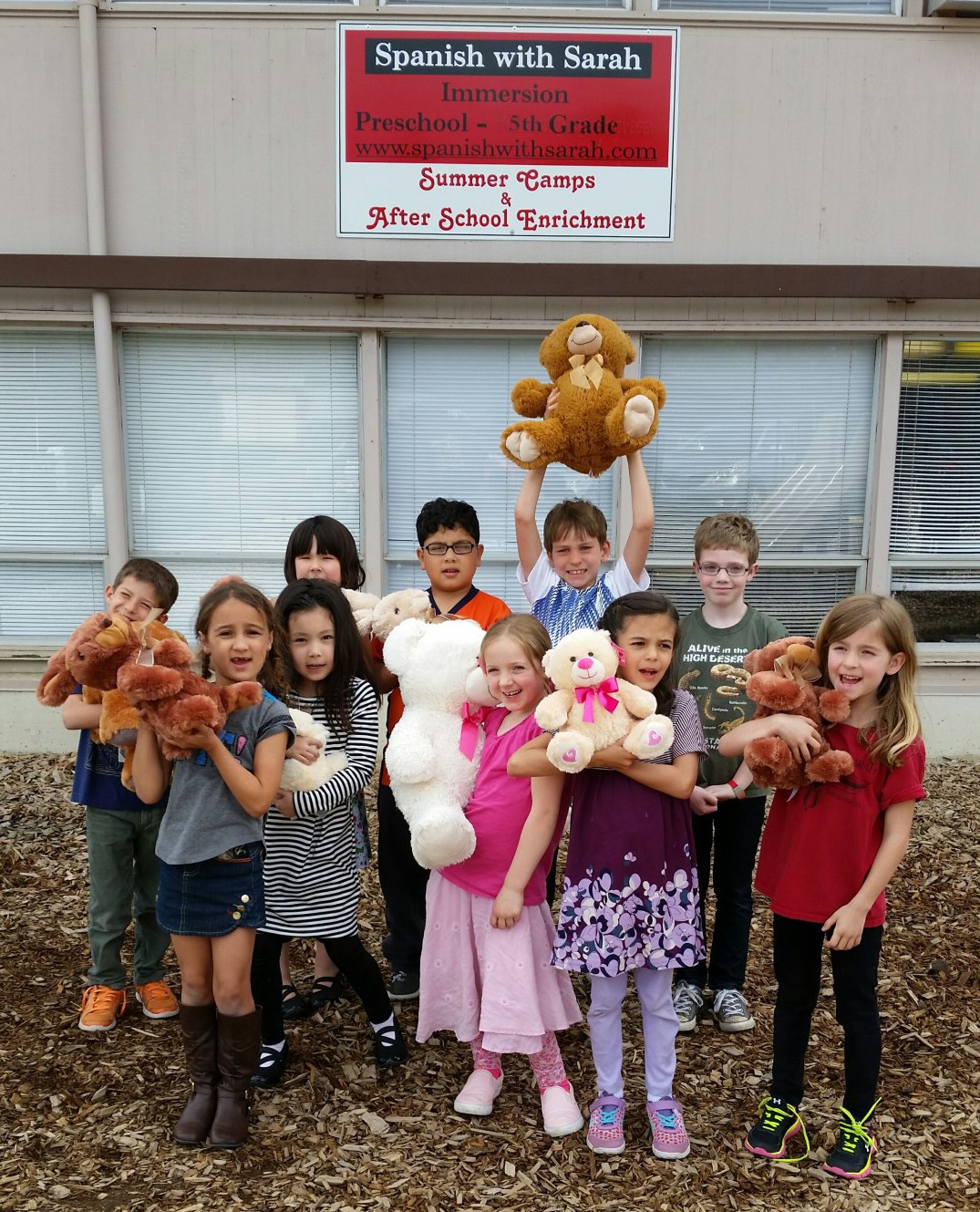
Language Arts
In language arts we finished our summary of the firefighter story we read a few weeks ago. They also started to draw a self portrait that will serve as the artwork that goes along with their summaries. They used mirrors to be able to correctly draw their facial features. The portraits are looking so cute and were a test in following directions that they all passed with flying colors! I’m proud of how much effort they put into doing such quality work.
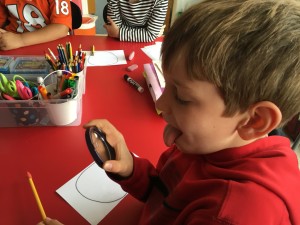
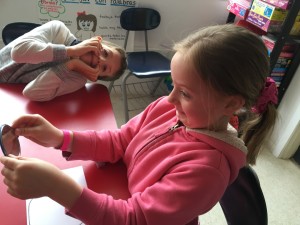
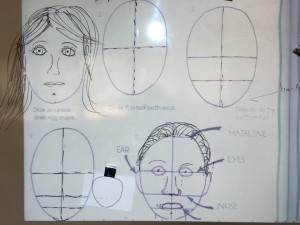
We also discussed using commas to separate a series of words to make their writing more easily understood, for example: We went to the market to buy apples, bananas and strawberries. We also discussed that a comma would not be used before the word and/y.
Phonics
In phonics we reviewed the diphthong -ua. They made for some very yummy diphthong/diptongo smoothies.
Math
This week in math we finished our unit on regrouping in addition and subtraction. We did more work on word problems. The kiddos had many opportunities to practice the word problems using bar models to help them to visualize and better understand addition and subtraction in the context of real world math. We also took the unit test and everyone did a great job!
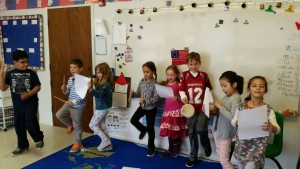 History & Geography
History & Geography
This week we learned about George Washington and the important roles that he played in founding this country, as the commander and chief of the Continental Army, as the president of the Constitutional committee, and finally becoming the president of the the new United States of America. The class was sad to hear that after all his sacrifices to this country he only had two and a half years to enjoy Mt. Vernon after all this before he passed. We also learned how he created a permanent Army and Navy as well as establishing the capital of the United States. On Tuesday we finished making our flags and added to our class time line. We learned the song Yankee Doodle and sang it in our own musical parade. The class loved marching around with instruments and practicing singing our song.
Science
We began a new science domain this week called Our Home the Earth. The class learned about geology and what a geologist does. We read about the different layers of the Earth; the crust , the mantle , and the core. Everyone was surprised to hear that all living things only inhabit the crust, a small portion of the Earth. We learned that geologists look at time, not in the term of hours and days, but in thousands and millions of years. We read how heat, pressure, and time effects the changes to our planet.
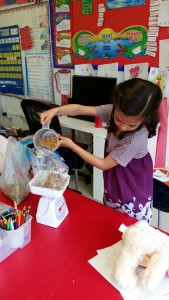 On Friday the students got to fill the bears that they’ve been collecting for the Children’s Center of Vancouver, with rocks and then sew them up. They had to first take out some of the stuffing from their animal and then determine how much rock weight their stuffed animal could hold. Next they weighed out the rocks using one of the scales set up in the classroom. We then sewed the animals with the help of Miss Laura and Miss Jennie. Miss Laura will be delivering the animals to the center sometime in the next couple of weeks. The class was very excited to know that these stuffed animals were going to a wonderful cause.
On Friday the students got to fill the bears that they’ve been collecting for the Children’s Center of Vancouver, with rocks and then sew them up. They had to first take out some of the stuffing from their animal and then determine how much rock weight their stuffed animal could hold. Next they weighed out the rocks using one of the scales set up in the classroom. We then sewed the animals with the help of Miss Laura and Miss Jennie. Miss Laura will be delivering the animals to the center sometime in the next couple of weeks. The class was very excited to know that these stuffed animals were going to a wonderful cause.
English Spelling
We worked on our new sorts this week. Students did one activity of finding their words in books in the room. They also practiced their words by writing them down and underlining the vowel patterns with different colored markers. Our next spelling test will be Friday, April 22nd. In our journals this week we wrote about sewing up our bears and we also had free choice writing. For grammar review we looked at different ways that we make words plural .
Art
The first grade students learned how to draw a symmetrical butterfly this week, and then they used neon crayons to add patterns and color. The next step of this project involves wetting the butterfly, crumpling it up to create cracks in the crayon, and then adding watercolor. As the students finish their butterflies, I’ll hang them in the window of their classroom. These are turning out very beautiful!
Music
Today we explored music from the South American harp traditions, inspired by sounds and sights in nature. These included “Cascadas” (“Waterfalls,”); “El pájaro campana,” (“The Bell Bird,”); “Galopando,” (“Galloping,”); Melissa Morgan’s “Waltz of the Dolphins;” and Ecuadorean indigenous harper Taita Emilio Guandinango’s composition, “De la cosecha de maíz,” (“Of the Harvest of Corn.”)
 Math
Math History & Geography
History & Geography






















